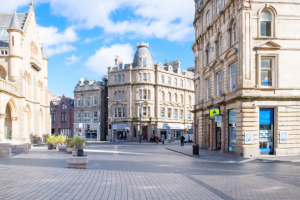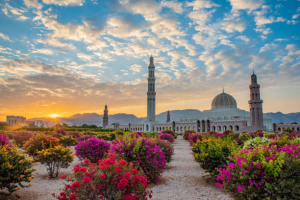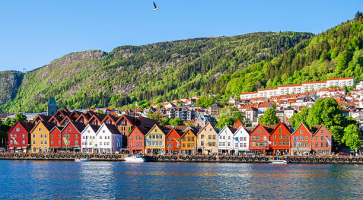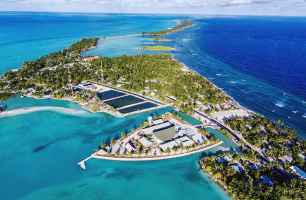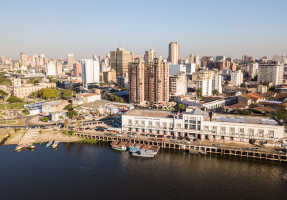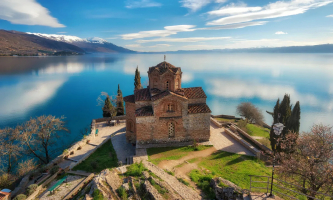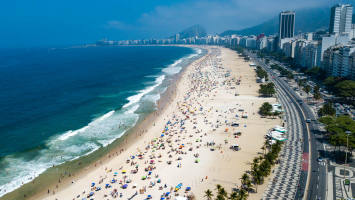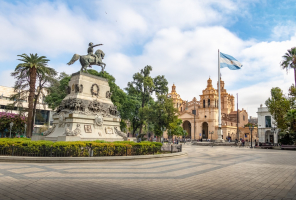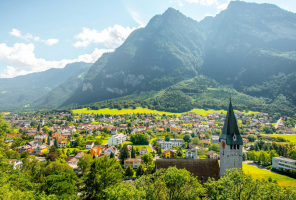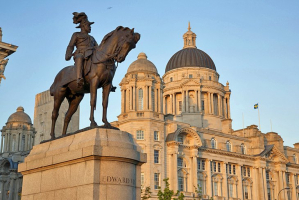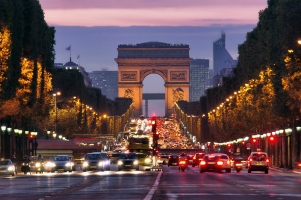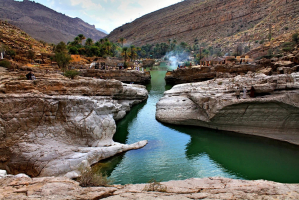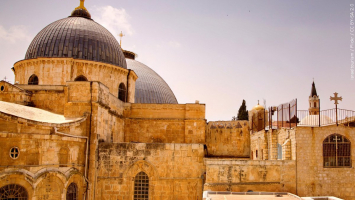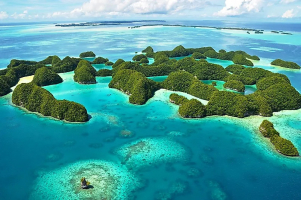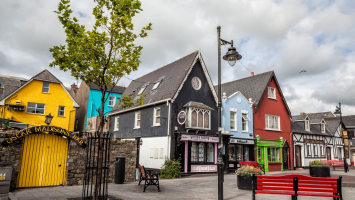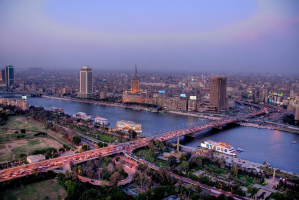Top 10 Reasons to Visit Uzbekistan
Uzbekistan is exactly how you image it to be – dazzling mosques, intricately carved minarets, Soviet-style buildings and towns stuck in time. The Silk Road ... read more...cities of Samarkand, Khiva and Bukhara are crowded with monuments paying homage to its history, tales of bravery, war, destruction and revival. If you aren't already convinced, here are 10 reasons to visit Uzbekistan that you should not miss.
-
"Medieval monuments" is one of reasons to visit Uzbekistan. There are hundreds of architectural monuments from various epochs on the Central Asian plains. Samarkand, Bukhara, Khiva, Shakhrisabz, Termez, and Kokand are among the most well-known. These cities were scientific and artistic epicenters. To commemorate Alexander the Great and Gengiz Khan, great architects erected world-famous monuments of ancient architecture such as palaces, mosques, and mausoleums. Many of these masterpieces did not survive, but by visiting those that have, visitors can view pages of history.
Uzbekistan's answer to India's Taj Mahal is the UNESCO-listed Registan in Samarkand. This economic complex of World Heritage Buildings graces postcards and the covers of guidebooks, and it is the number one destination for Uzbek tourists. However, the Registan is only one of hundreds of breathtakingly gorgeous medieval monuments scattered throughout Uzbekistan. The Gur-i Amir (Emperor Timur's mausoleum) is thought to be the architectural model for both Babur's Tomb in Kabul and Humayun's Tomb in Delhi. The Kalyon Minaret in Bukhara (another UNESCO World Heritage Site) was the only structure in the city to survive destruction by Genghis Khan, and it is flanked by the Kalyon Mosque and the Mir-i Arab Madrassa, both of which are decorated with the mesmerising patterns of tiles and glazed turquoise domes that are so evocative of the Silk Road.
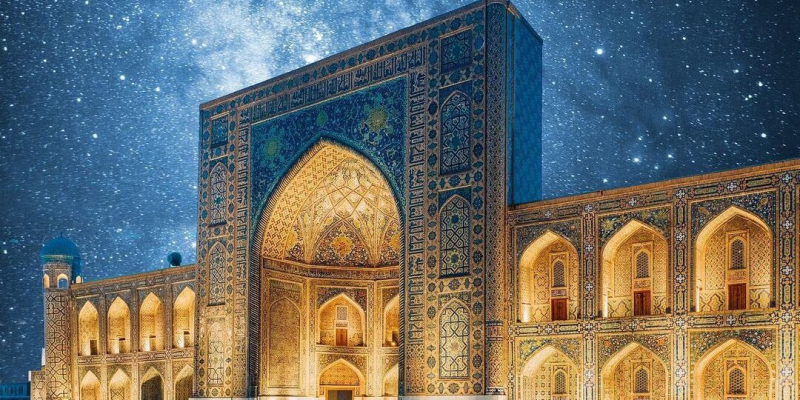
ea-travel.uz 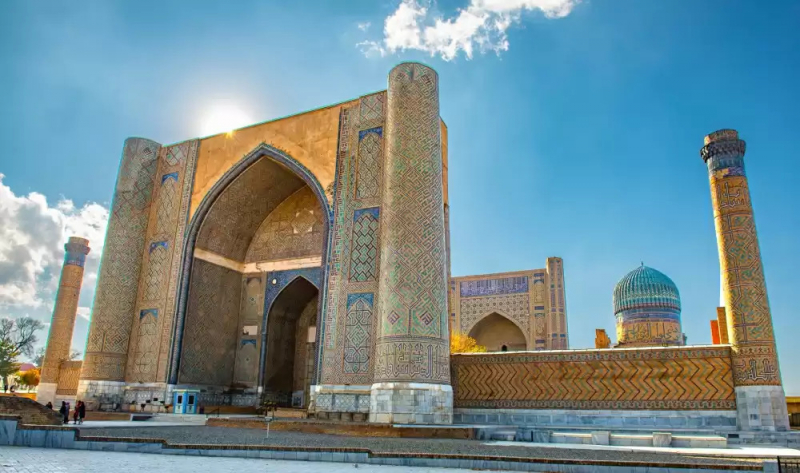
indyguide.com -
Uzbek cuisine is known for its rich flavors throughout the post-Soviet region and beyond. It is a fusion of Turkic and Persian cooking traditions with a history extending back thousands of years. Although Uzbek food is often high in meat, everyone can find a dish that they enjoy. In addition to meat-heavy dishes, there are treats made from dough, fresh vegetables, and dried fruits or nuts.
Uzbekistan, the most populous Central Asian country, is diverse, and this variation can be seen in gastronomy across the country. For example, residents of Tashkent, the capital city, are known to prefer lamb over other types of meat in cooking. There are several meals created using horse meat in the north-eastern region, including "naryn" and "beshbarmoq."
Khorazm, the country's far western region, is famous for its "tukhum-barak" (a crescent or square ravioli filled with egg filling), which can be boiled or fried. It also has its own "shivit osh," which is made using a green colored (dill-based) pasta rather than rice. "Somsa" (a meat or potato filled oven baked dough/or fried with greens or squash filling) is another popular lunch food in Uzbekistan, which comes in a variety of varieties across the country. It can be round, square, triangle, or envelope shaped.
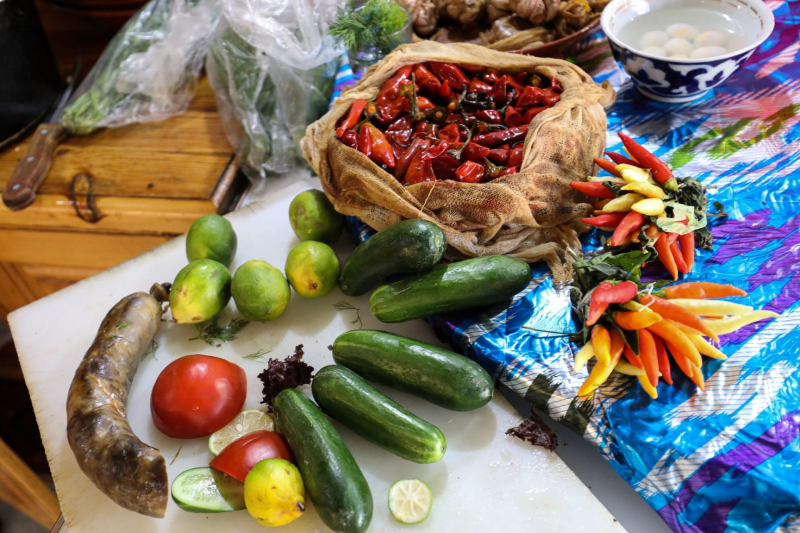
vivalalilya.com 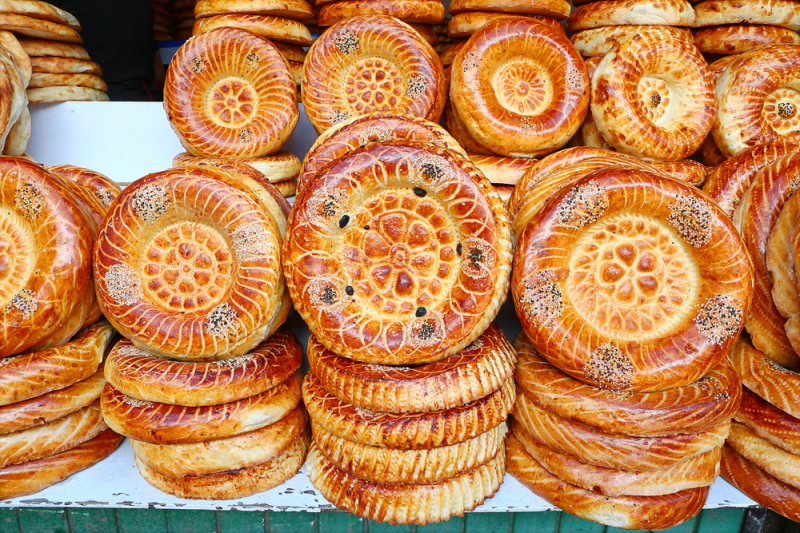
vivalalilya.com -
When it comes to lodging, Uzbekistan tourism's main draw is not its five-star hotels, but rather its modest, one-of-a-kind accommodations. Historic merchants' mansions in Bukhara's UNESCO Old Town have been converted into boutique hotels. Breakfast is served in their galleried courtyards or dining rooms filled with ancient paintings. The madrassas of Khiva are no longer used as religious institutions, but the cells where students studied and prayed have been turned into atmospheric guest rooms in certain cases. The Hotel Orient Star is located at the Mohammad Amin Madrassa, just adjacent to the Kalta Minaret.
You can spend the night in a yurt camp at Aydarkul in the Kyzylkum Desert, surrounded by camels. If you require modern conveniences, you can upgrade to a swankier yurt with an en suite bathroom at Sarmishsoy. It's important to remember that staying in local properties like these not only allows you to learn more about Uzbekistan, its culture, and hospitality, but also directly contributes to the local economy, making tourism much more sustainable.
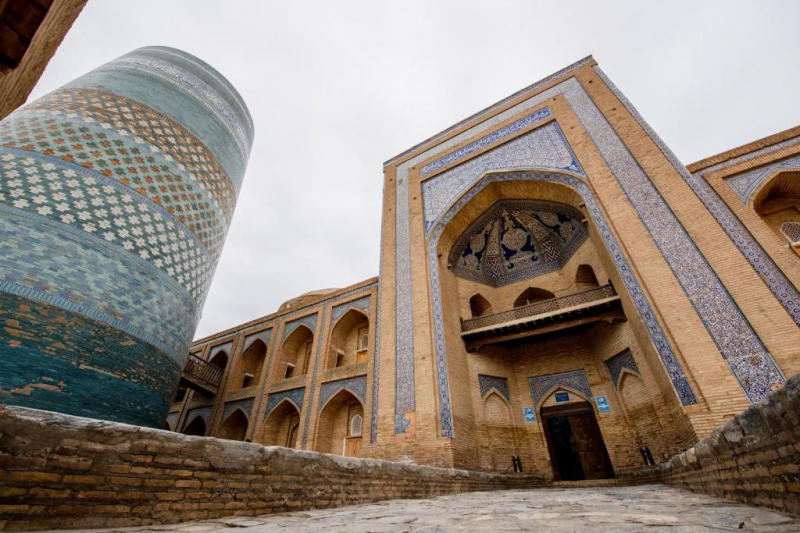
planetofhotels.com 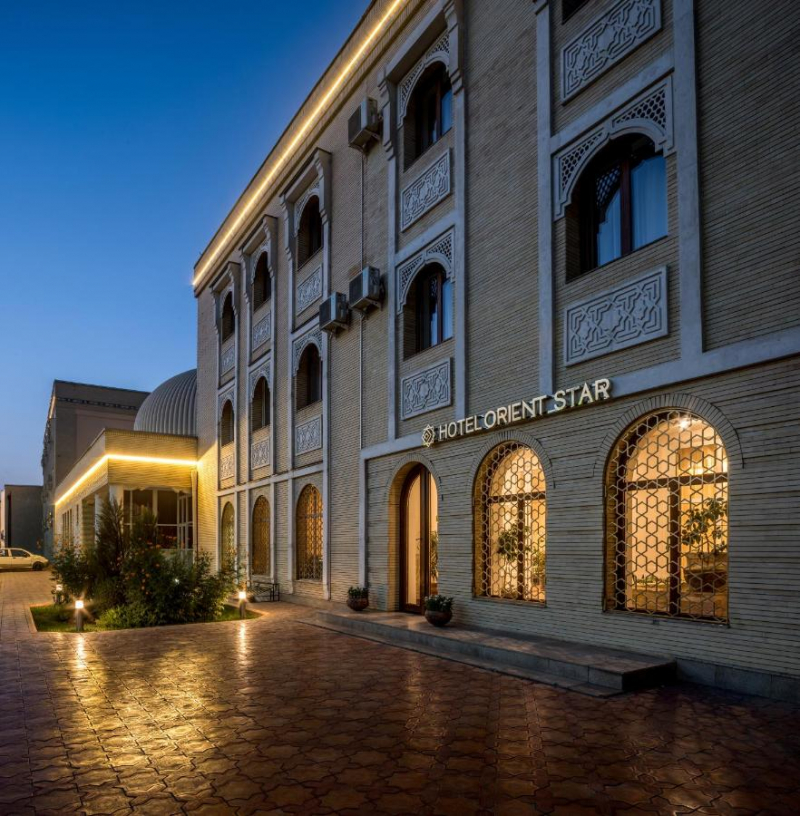
planetofhotels.com -
Tashkent, Uzbekistan's capital, was wrecked by an earthquake in 1966, which provided a chance for comprehensive reconstruction utilizing mass-produced buildings. Later, other big buildings were built, as well as the fantastic metro system. The massive Hotel Uzbekistan, located in Tashkent's Amir Timur square, is a classic example of Soviet 1970s modernist architecture. During its heyday, celebrities like Federico Fellini, Marcello Mastroianni, and Raj Kapoor stayed there, as did USSR power brokers.
Soviet architecture was influenced by the Soviet space program and Yuri Gagarin's celebrated voyage into space, as well as conceptions of the cosmos and science fiction. The former Lenin Museum in Tashkent, which now houses the massive State Museum of History of Uzbekistan, is one such structure. It's an intriguing collection of daring, imaginative, and even eccentric structures. "The key to Soviet architecture is above all political," writes Chaubin in the introduction. The causes of its evolution must be sought in the regime and its evolution rather than architectural theory. Nowhere else, and over such a long period of time, has power so directly shaped the urban landscape."
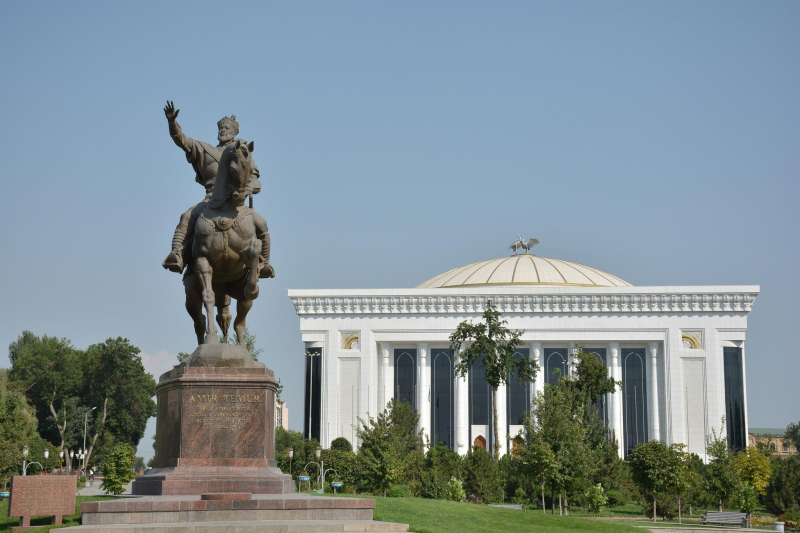
advantour.com 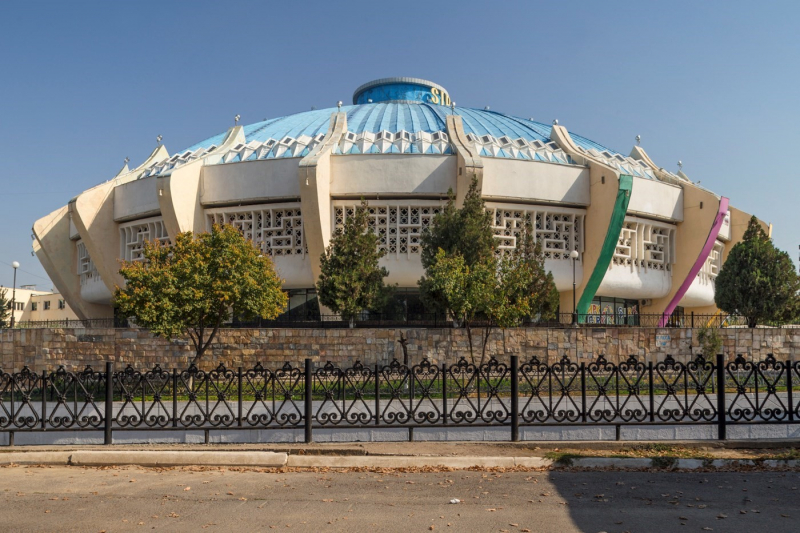
anothermag.com -
Adventure and nature tourism takes you away from the throng and into Uzbekistan's deserts, gorges, and mountain fissures for hiking, camping, and other activities. Uzbekistan is more than just cities and historical sites. In actuality, the enormous Kyzylkum Desert and mountains cover much of the country. While these locations are less populated, leaving them relatively undisturbed, they have been inhabited for ages. Going into nature will provide you with an entirely different view of Uzbekistan.
There are numerous opportunities for adventure and environment tourism in Uzbekistan, such as spending the night in a yurt and witnessing how nomads have lived for years, or hiking through the small canyons of the Chimgan Mountains near Tashkent. Man-made features of Uzbekistan include the alien plains revealed by the retreating Aral Sea and Aydarkul Lake, which was built by a dam in 1969. Any of these locations would be a fantastic change of pace from the hustle and bustle of city life, or perhaps a destination in its own right.
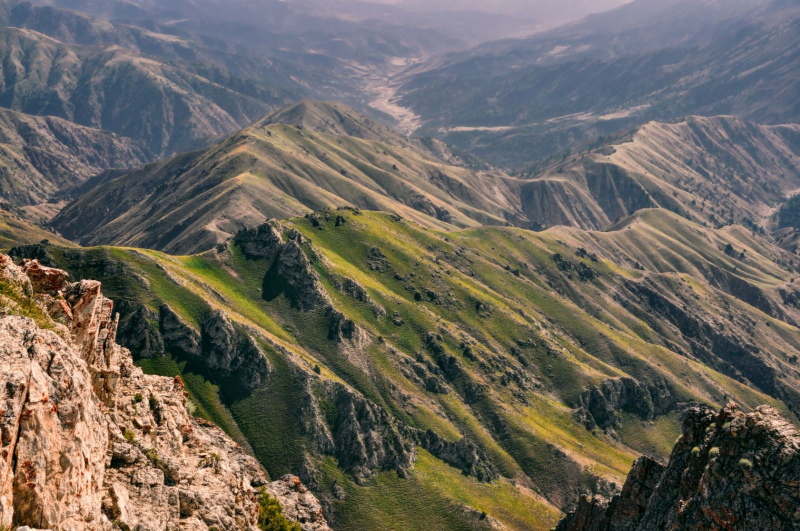
tripadvisor.com 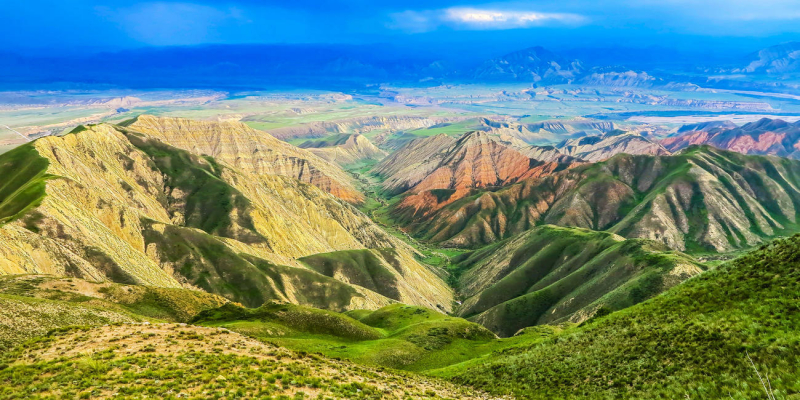
wildfrontierstravel.com -
Vibrant festivals is one of reasons to visit Uzbekistan. Attending a festival or other public event is one of the finest ways to experience Uzbekistan's intangible cultural heritage. Throughout the year, Uzbekistan Tourism organizes a calendar of interesting cultural events, so there is always something to do. The glittering Kokand Palace serves as the backdrop for the biennial International Festival of Handicrafters, and the Sharq Taronalari International Music Festival takes place on the Registan's center square. Electronic music fans should plan their trip to coincide with the Stihia Festival, a Techno festival held in the spooky desert hamlet of Muynaq, surrounded by the skeletal ships of the shrinking Aral Sea. Billed as Central Asia’s answer to Burning Man, Stihia also does an important job of raising awareness of the Aral Sea environmental disaster and the efforts to restore its water levels.
Every four years, the green hills of the Surkhandarya region become a meeting point for the past and the present. The international folklore festival "Boysun bahori" ("Baysun spring") allows you to travel back in time and become acquainted with the ancient culture of the people who live in this region, carefully preserving and passing down from generation to generation the customs and traditions of their people dating back to the pre-Islamic era. Baysun district does not simply transform into a small island of the revived past; it is a unique area where everything breathes and lives the culture and customs of the ancestors from day to day, and residents of each village are ready to share the beauty of the ancestors' customs with guests at any time. Folk music, singing, and dancing by not only Uzbeks, but also participants from other countries, as well as souvenirs created by local artists, will decorate a few days that no one will forget.
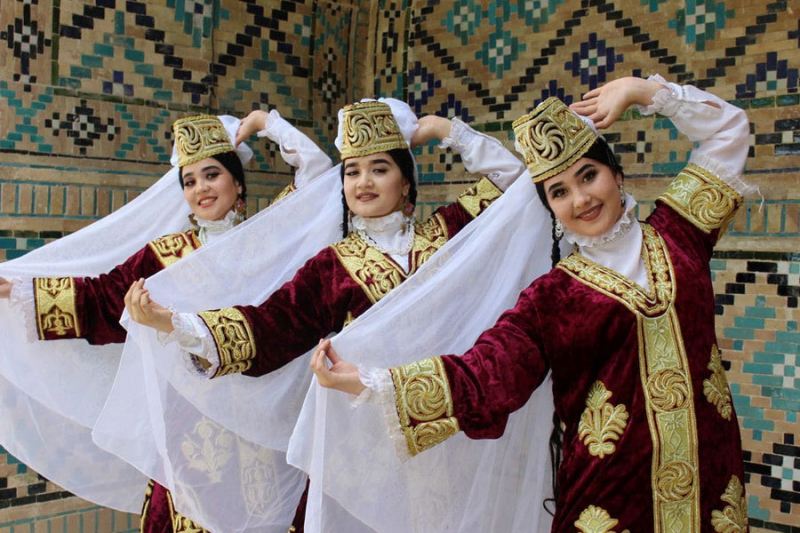
advantour.com 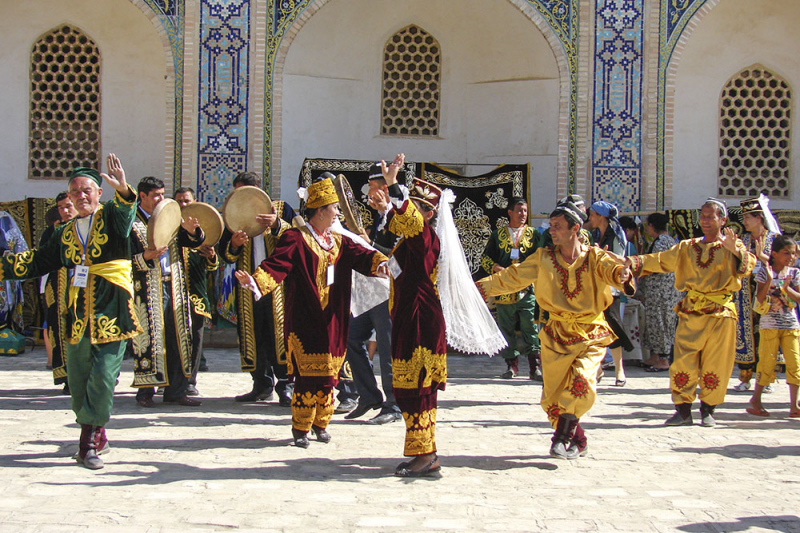
centralasia-adventures.com -
The Silk Road dates back to 138 BC, when China opened its borders. Over ages, traders, missionaries, and conquerors passed through Uzbekistan, bringing with them different cultures, faiths, and crafts, the vestiges of which may still be found.
The paved alleys of Tashkent, Samarkand, and Bukhara in Uzbekistan's Central Asian country are studded with captivating embellishments that once placed them on a crucial trajectory astride the historic Silk Road. The cross-section connecting Anatolia and the Mediterranean Sea with China on one hand, and South Asia with Europe and Africa on the other, created a melting pot of civilizations in this region.
The 450-kilometer (280-mile) road connecting Tashkent, the modern capital city, and Samarkand, the historic city, is bordered with Chinars. Roadside highway eateries that serve cuisine on raised wooden platforms adorned with rugs and pillows instead of tables and chairs in the shade of chinars and mulberry trees are stunning. Glittering minarets, sensuous domes, and hypnotic mosaics make Samarkand and Bukhara, Uzbek cities, grand live museums.
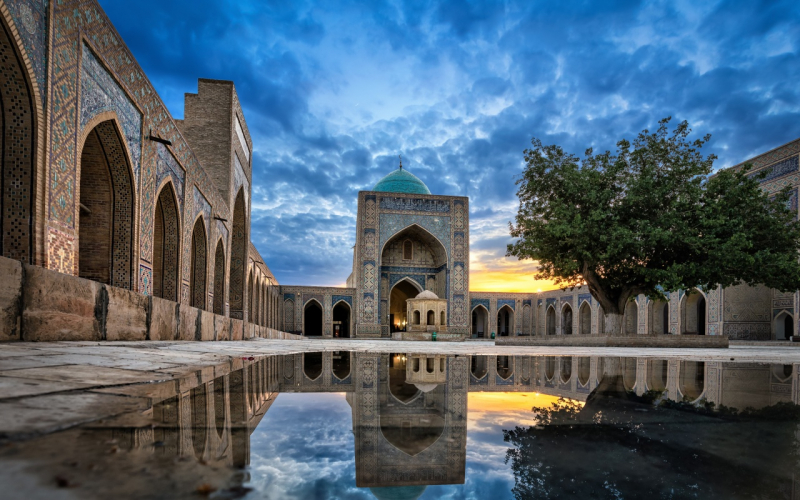
planet-ride.com 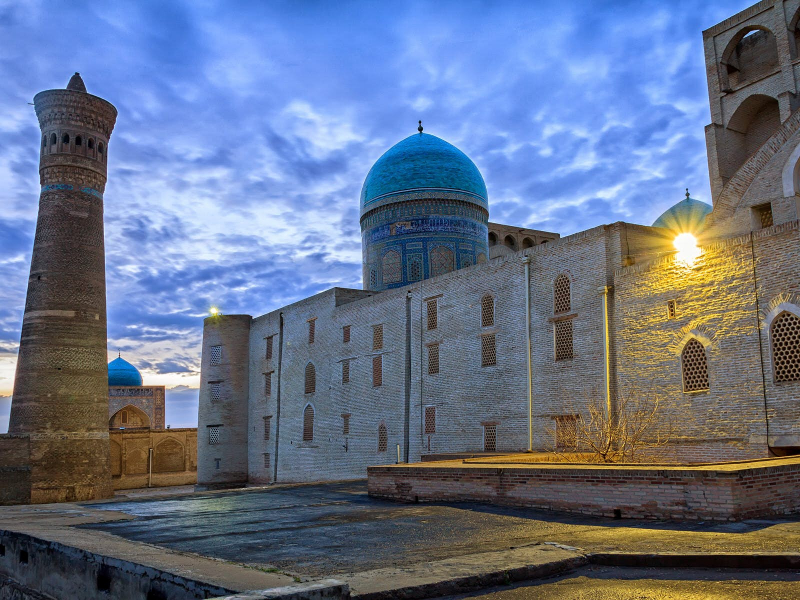
planet-ride.com -
To date, the UNESCO Representative World Heritage list includes four architectural complexes: Khiva's Ichan Kala Museum-reserve (1990), Bukhara's historical center (1993), Samarkand's historical center "Samarkand - crossroads of cultures" (2001), Shakhrisabz's historical center, the Ugam-Chatkal National Park (2016), and nine intangible heritage monuments. Samarkand's beauty and wonder are compelling and addictive. The Registan, a square with three towering madarassas, is one of Central Asia's most recognizable structures. The buildings really come to life at sunset, when the setting sun's colors, along with yellow lights, illuminate the structures.
Since its independence, Uzbekistan has prioritized not only the preservation of cultural assets through monument restoration, but also the strengthening of national consciousness and recognition in global culture. Minarets and ancient domes have become a kind of symbol of many cities, a picturesque silhouette of urban landscapes, their religious and educational institutions-mosques and madrassas-for more than a millennium. These unique creations of ancient architects have acquired a special status as objects of priceless cultural heritage in independent Uzbekistan and are subject to special state protection.
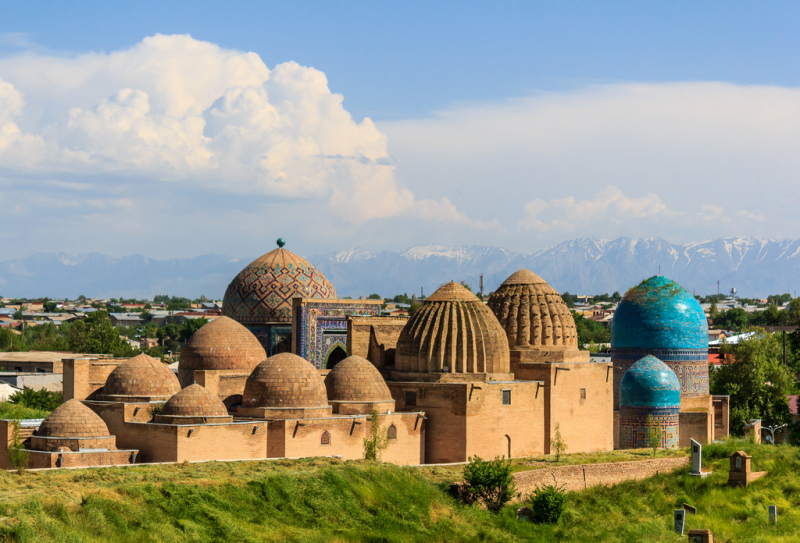
stock.adobe.com 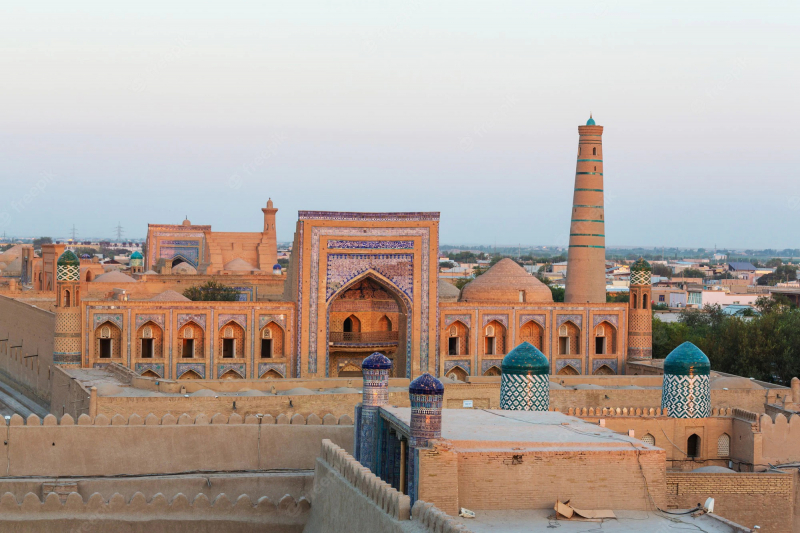
stock.adobe.com -
The mountains of Uzbekistan are so gorgeous and majestic that one could go on and on about them. There seemed to be no one who would not be lured to the mountains. There is no doubt that the mountains are a great place to recharge your batteries, appreciate all of nature's power, and connect with God's wonderful creation.
The mountain system covers one hundred thousand square meters and accounts for 20% of our country's total land area, which is significant. Uzbekistan's mountains are not the highest in the world, but they are among the most magnificent. Mountains often range in height from two to four thousand meters. The four-thousanders are located in the most inhospitable areas and are extremely difficult to reach. The tallest mountain is Khazret-Sultan, which has a height of 4643 meters and is located on the boundary of Surkhandarya and Tajikistan on the Gissar Range.
Surprisingly, there are several communities even on the mountains. It is worth noting that such villages are recognized by their characteristic Central Asian village appearance. Welcome to the amazing mountainous Uzbekistan if you want to see a centuries-old mountain village, meet kind-hearted people, try traditional dishes made from the purest ingredients, and enjoy the picturesque view of the mountains!
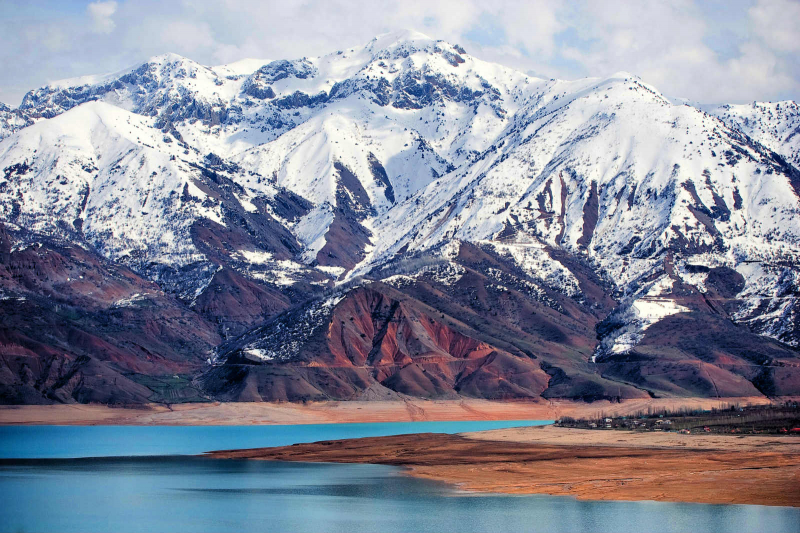
iexplore.com -
Perhaps when traveling in another country, in addition to money and related procedures, means of transportation is also something that many tourists are interested in. But Uzbekistan is an exception because you don't need to worry too much about transportation. Almost all parts of the world offer flights to the Uzbek capital Tashkent. And so you don't have to worry about connecting flights or not having a seat. Just be sure to book early to take advantage of great discounts. Finally, don't spend more on flights when you should spend on exploring.
What's even more amazing is that all major cities in Uzbekistan are well connected by the railway network. Therefore, in Uzbekistan the most convenient and practical way to travel is by train. You need to choose carefully as not all trains run on all days. As a solo traveler in Uzbekistan, you will have to carefully check the type of connection you want. There are slow trains (Sharq) and fast trains (Afrosiyob), night trains, etc.
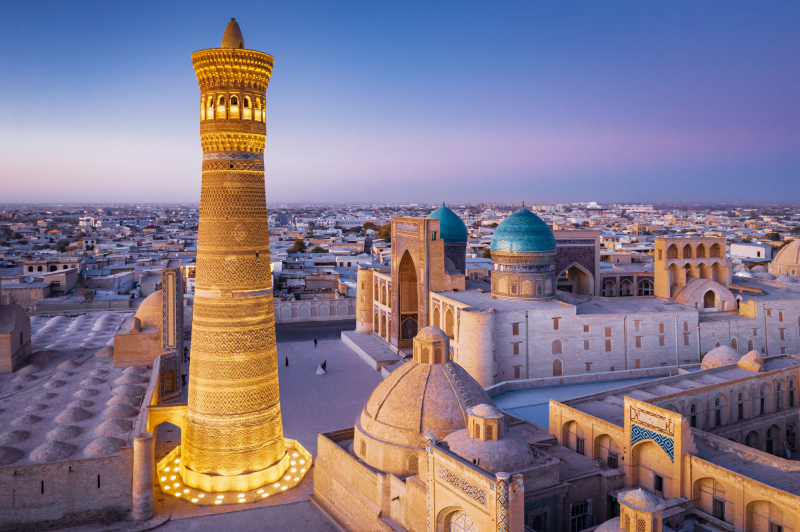
businessstyle.vn 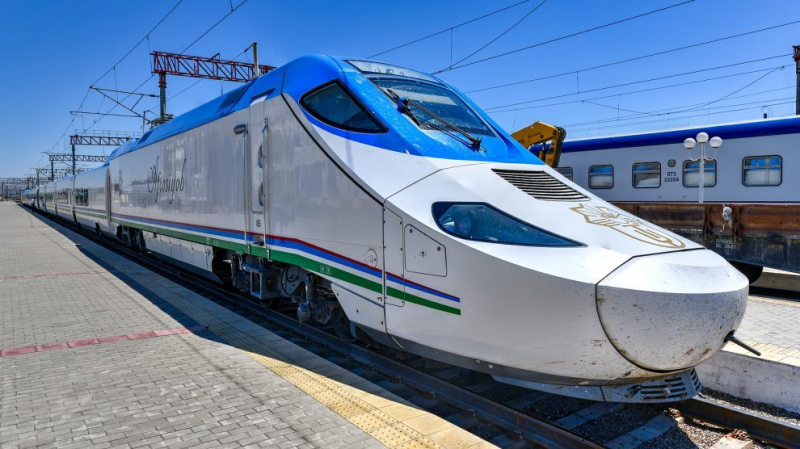
explanders.com













